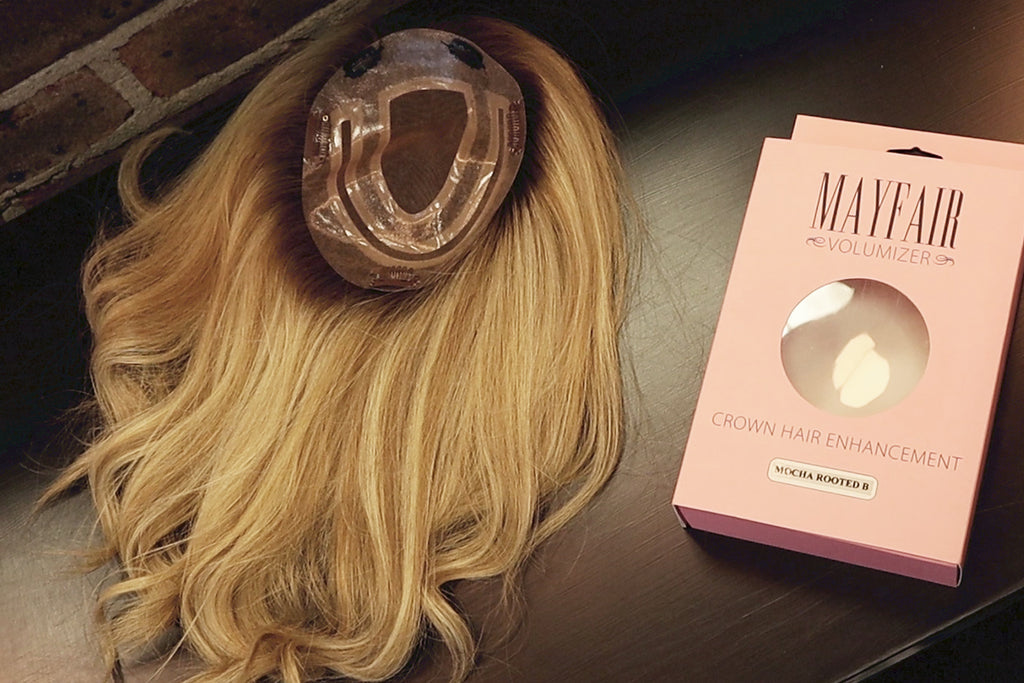ALOPECIA
At Hairspray we see many customers that visit our wigs showroom in Dublin with different types of alopecia. Generally woman that have this specific hair loss condition prefer human hair wigs over synthetic. The reason being is real hair wigs generally last longer than synthetic and are easier to style. Therefore, if you have alopecia and are looking for the right wig or hair piece, keep in mind you will be wearing your wig most days. So choosing the right wig at your consultation is important. There are a number of grants available from both the PRSI and HSE wigs scheme. More

Alopecia Areata
Although the precise reason of alopecia areata is not yet known, an autoimmune condition is thought to be the main reason. The immune system of the body incorrectly targets its own cells and tissues, including the hair follicles, in autoimmune illnesses, which causes hair loss. Given that alopecia areata tends to run in families, it is believed that hereditary factors may contribute to the development of the condition. Stress, viral infections, and environmental factors may also contribute to the development of alopecia areata, while more research is needed to completely understand the underlying causes of this disorder.
Alopecia Areata signs and symptoms:
Hair loss in small, rounded patches is Alopecia Areata's most obvious sign. Normally smooth, these patches can occasionally be a little red or irritated. It may also feel sensitive or itchy where the scalp or other parts of the body are affected. The nails may occasionally also be impacted, developing pitting (small dents) or white patches. Woman with Alopecia Areata may only experience a few minor patches of hair loss, whilst others may completely lose all of their body or scalp hair, a condition known as Alopecia Totalis or Alopecia Universalis, respectively.
Alopecia Universalis:
With Alopecia Universalis it is believed to be an autoimmune disorder.
The immune system mistakenly attacks the body's own cells and tissues, including the hair follicles, leading to hair loss. Genetic factors may also play a role in the development of Alopecia Universalis, as it tends to run in families. Other triggers such as viral infections, stress, and environmental factors may also contribute to the onset of this condition, although further research is needed to fully understand the underlying causes.
Symptoms of Alopecia Universalis:
The most prominent symptom of Alopecia Universalis is complete hair loss all over the body. This includes the scalp, eyebrows, eyelashes, and other body hair. The absence of hair may also affect the nails, causing pitting (small dents), ridges, or white spots. In addition to the physical symptoms, Alopecia Universalis can also have a significant impact on an individual's emotional well-being, as the loss of hair can affect self-esteem, body image, and quality of life.
Frontal Fibrosing Alopecia typically presents with a distinctive pattern of hair loss. Generally we see at our wigs shop in Dublin the frontal hairline slowly recedes, and the eyebrows may become thinner or completely disappear. The affected areas may also show signs of inflammation, such as redness, itching, and tenderness. Over time, the hair loss may extend further back into the scalp, and in some cases, it may affect the sideburns and other body hair. Unlike other types of hair loss, FFA is often associated with a band of pale, slightly raised, and shiny skin at the frontal hairline, known as the "lonely white band."













